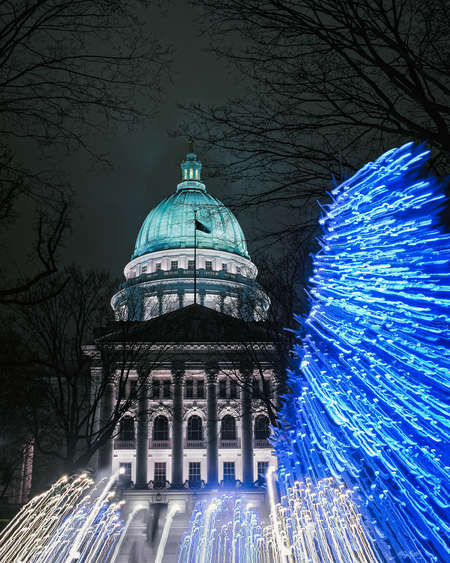Winter holidays bring out the decorations and festive lights. Those colorful scenes are great subjects for the creative photography technique called Intentional Camera Movement (ICM).
Learn how to capture these creative in-camera effects yourself by following these simple tips.
WHEN TO SHOOT
Slower shutter speeds are required to capture an ICM shot. For this reason, it's easiest to take these photos in low light conditions. Daytime ICM photos may require the use of Neutral Density filters to prevent overexposure.
CAMERA SETTINGS
Shoot in Manual or Shutter Priority Mode to set a longer exposure time (1-10sec recommended). Use Manual Focus to avoid refocusing between shots. Set aperture and ISO depending on the scene’s lighting or lights. Watch your histogram to avoid overexposure.
CAPTURE MODE
It’s best to set your camera to a continuous capture mode, allowing you to focus solely on movement while the camera is recording. The Olympus Live Composite mode is my favorite method to create ICM art. Live Composite won’t impose time constraints on the movement or capture process. Without Live Composite, the camera time-lapse mode can be used to constantly trigger the shutter for the desired length of time.
MOTION
The look and feel of your shots will be determined by the smoothness of movement in the chosen direction and speed. Turn off image stabilization on the camera or lens to avoid unwanted movements.
Larger movements help to avoid the appearance of accidental camera shake. Experiment with direction and technique until you create something you like. Try panning or spinning the camera for different effects. Combine motions or use a tripod and a 360-degree ball-head for controlled movements.
ICM SPIN + LIGHT PAINTING:
Light-painting a portion of the scene (or leaving the camera still) before adding ICM can create a double-exposure look. I used a red flashlight to define this tree's trunk, adding enough static detail to help the viewer understand the original subject. After painting the tree red, the camera was rotated near 360-degrees on the tripod ball-head to create an orbit of Christmas lights.
SPINNING TIP
Use your widest lens (or my favorite - the M.Zuiko Digital ED 8mm F1.8 Fisheye PRO) to get better ICM spinning results. Get as low to the ground as possible and point your camera up, under the tree or lights. If using a tripod, be sure to practice the spin a few times before taking a shot, paying attention to balance & equipment weight as to prevent your tripod from falling. Camera release cables may tangle with the tripod. You can use the Olympus Image Share app or a wireless remote to trigger the shutter and avoid restricted motion.
When you’re able to smoothly spin your camera body on the ball-head, use your favorite capture mode and begin taking a series of spin shots. Pick the best of the bunch and have fun editing!
ICM ZOOM TECHNIQUE
If using a zoom lens, you can try another fun ICM trick. Shooting from a tripod or stable surface without moving the camera, zoom the lens in or out while the shutter is open to create light-trails in the scene.
I used the technique to create an abstract framing opportunity in this 2-shot composite photo of the Wisconsin Capitol building. An ICM and static photo were composited in editing to add the best details from each scene into a single creative image.
There are no rules for ICM photos, so creativity & experimentation are favored. It can be addicting to chase these shots while trying out new subjects and movements. Be sure to have lots of memory card space to extend your fun and shooting time. Create something unique and personal.
Happy Holidays!
ABOUT MASON MORRIS
Instagram: @GetMased
Mason Morris is a fine art photographer from Wisconsin. Exclusively shooting Olympus cameras for over a decade, the Olympus OM-Ds have won him contests & regional recognition. You’ll find him focused on slow shutters and technical shots, capturing storms & seasonal stories from the fresh coast of Lake Michigan.



